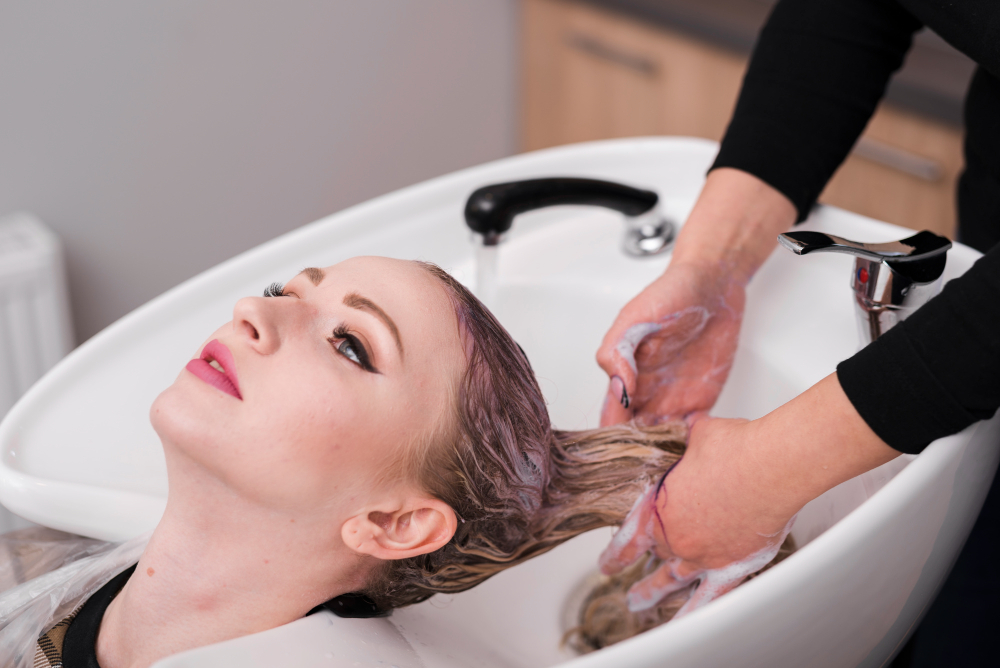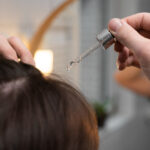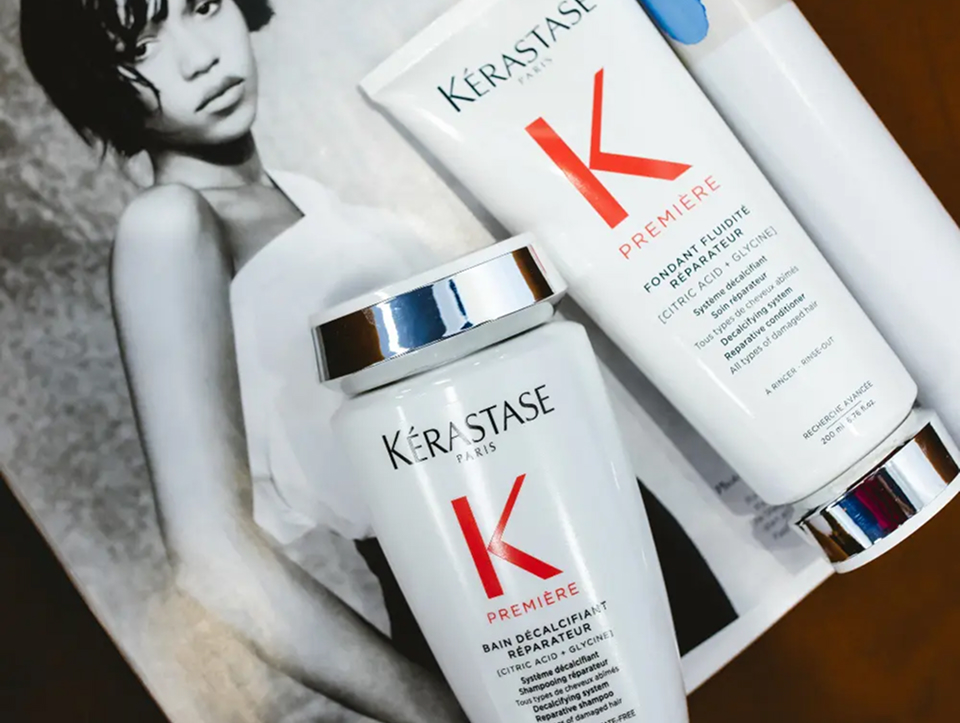When it comes to restoring shine, strength, and health, many people wonder: “What’s the real difference between professional vs DIY hair treatments?”
Both approaches have their benefits. DIY natural hair care routines can be affordable and convenient, while professional salon treatments deliver stronger, longer-lasting results.
In this guide, you’ll learn how each option works, when to use them, and how to combine both for the healthiest hair possible.
Professional vs DIY Hair Treatments Comparison
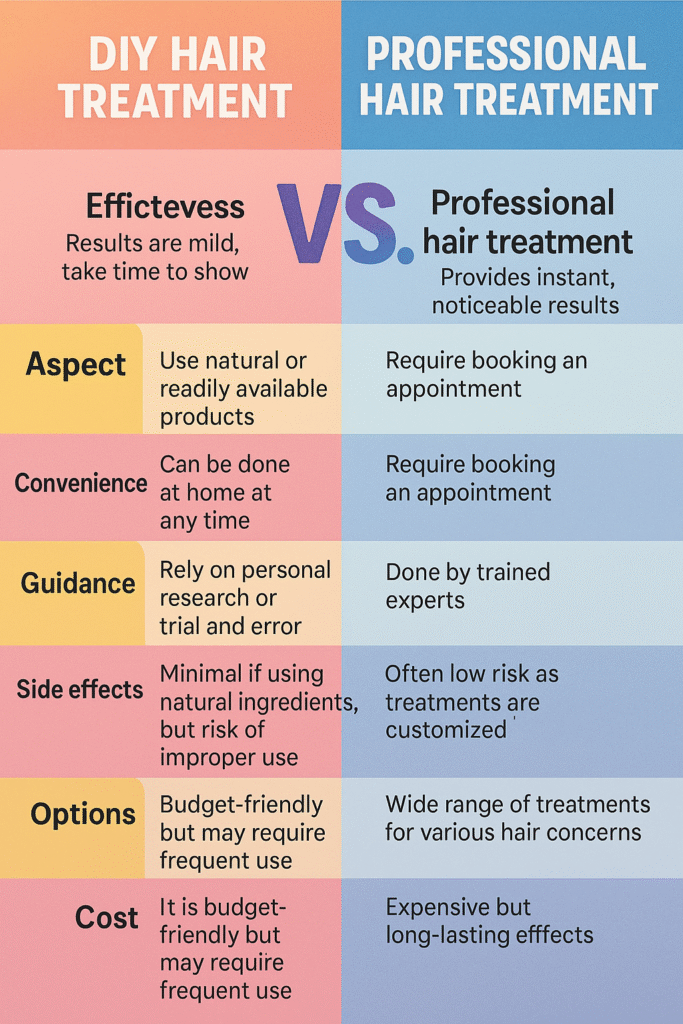
DIY Hair Treatment: Mild results, affordable, convenient, often natural ingredients.
Professional Hair Treatment: Stronger, longer-lasting effects, tailored by experts, but more expensive.
Pros & Cons at a Glance
DIY Hair Treatments

Pros:
- Cost-effective
- Convenient (no appointment needed)
- Use natural, readily available ingredients (like coconut oil, aloe, rice water)
- Minimal side effects if ingredients are safe
Cons:
- Results are mild and take time
- Trial-and-error approach
- Risk of buildup or scalp irritation if misused
- Frequent application required
👉 Tip: Always patch test DIY mixes before applying to your whole scalp.
Professional Hair Treatments
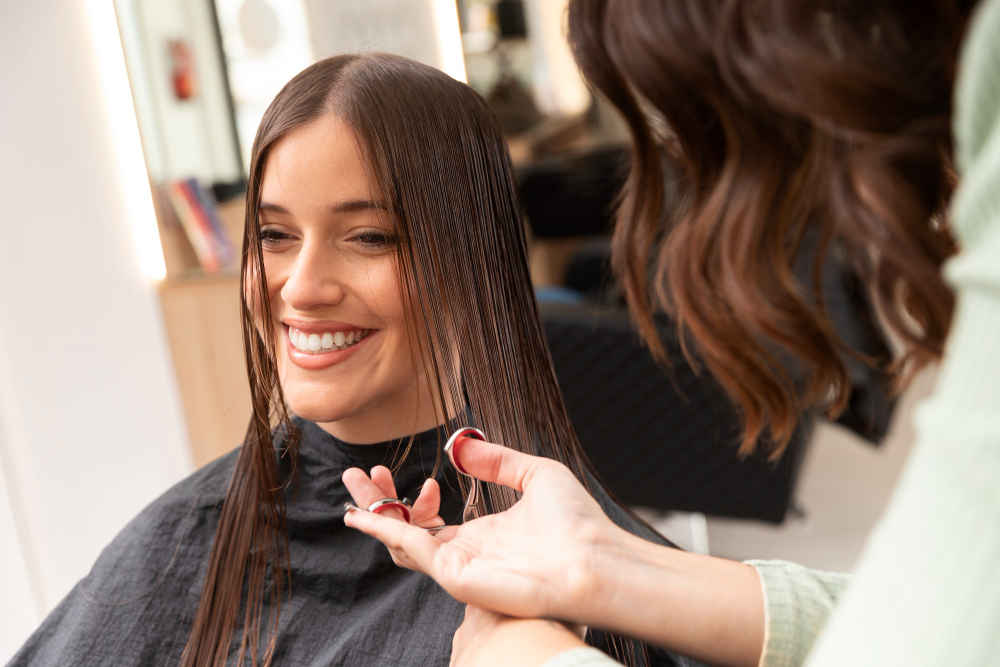
Pros:
- Immediate, visible results
- Customized to your hair needs (damage, dryness, color correction, etc.)
- Performed by trained experts
- Long-lasting effects
Cons:
- Expensive upfront
- Requires salon booking
- Some treatments may involve chemicals (though risks are low when professionally applied)
👉 Tip: Ask your stylist for treatments backed by research, like bond-building (Olaplex) or keratin smoothing, which show proven effectiveness in repairing damaged hair cuticles.
DIY Natural Hair Care: Benefits, Drawbacks & Recipes
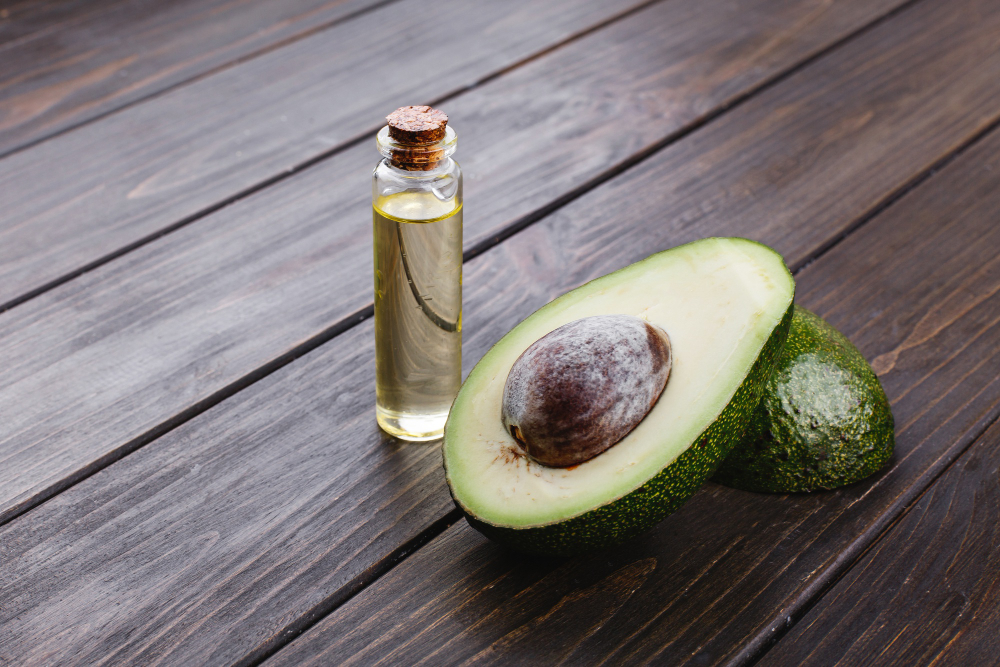
Many of you love the idea of using ingredients from your kitchen to promote healthy hair. And yes, DIY natural hair treatments can help with maintenance:
- Moisture Boost: Mix honey + olive oil for a deep conditioning mask.
- Shine & Strength: Rinse with rice water (studies suggest amino acids may strengthen strands).
- Scalp Refresh: Aloe vera gel to soothe irritated skin.
⚠️ Drawbacks: Results vary, and not all natural ingredients are safe (e.g., lemon juice can lighten hair but also cause dryness).
👉 If you’re struggling with dry scalp, check out our guide on what causes dry scalp.
Detox Treatments: DIY vs Professional

“Hair detox” is trending — but what does it mean?
- DIY Detox: Baking soda paste, apple cider vinegar rinses. These can remove buildup, but overuse may strip natural oils.
- Professional Detox: Salons offer scalp renewal treatments or clarifying masks designed to rebalance the scalp without irritation.
👉 Tip: If you deal with oily scalp often, read our guide on oily hair or oily scalp.
Advanced Professional Treatments You Should Know

- Keratin Treatment – Smooths frizz, strengthens strands, lasts up to 3 months. (Research shows keratin reduces breakage significantly.)
- Bond Builders (like Olaplex) – Repairs internal bonds after bleaching or coloring.
- Hair Botox – Fills in damaged fibers for smoother texture.
- Scalp Treatments – Deep cleanses, stimulates circulation, and addresses conditions like dandruff.
👉 For more on scalp health, explore common scalp conditions.
DIY Versions of Professional Treatments — Are They Safe?
You’ve probably seen “DIY hair botox” recipes online. While fun to try, these don’t yield salon-grade results. Many professional treatments utilize patented ingredients (such as Kerastase Fusio-Dose, available on the Kerastase official website) that can’t be recreated at home.
👉 Tip: Use DIY masks between salon visits to extend your results, but don’t rely on them for repairing severe damage.
Which Treatment Is Best for You?
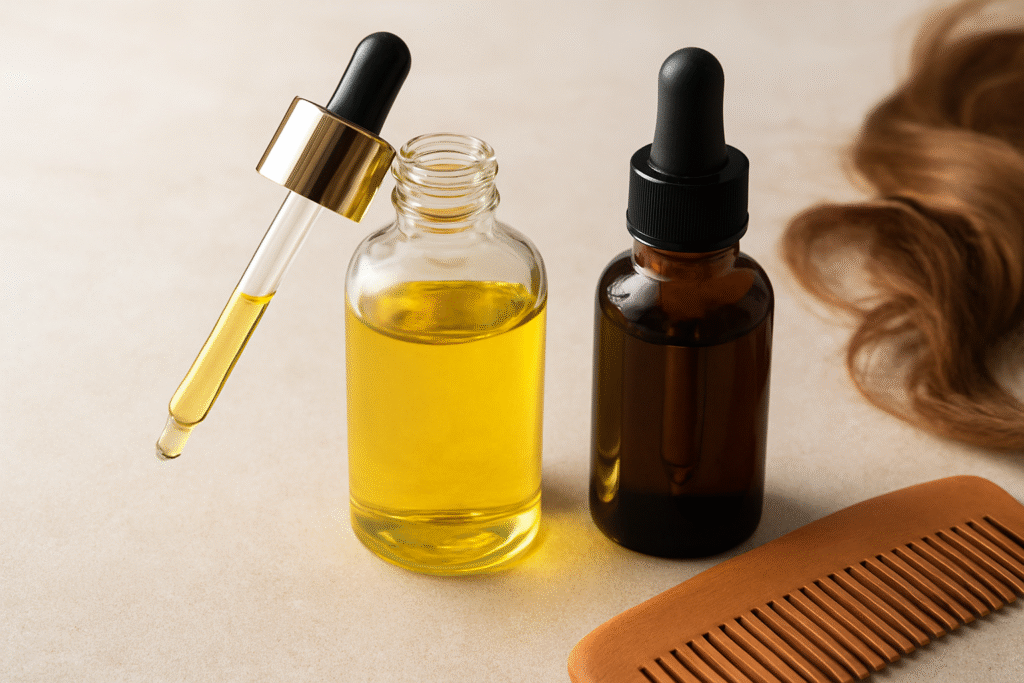
- Mild dryness, dullness, or maintenance? → DIY natural masks are fine.
- Frizz, breakage, chemical damage, or color correction? → Go professional.
- Hair loss or scalp concerns? → Book a hair consultation for a tailored plan and explore our detailed article on hair loss here.
- Want both worlds? → Alternate: DIY weekly, professional every 2–3 months.
For a deeper understanding of your hair health, start by understanding the hair growth cycle.
Professional vs DIY Hair Treatments – What’s Right for You?
Ultimately, choosing between professional and DIY hair treatments comes down to your specific goals and preferences. DIY masks are great for weekly upkeep, while professional salon treatments are the best choice for long-term repair and transformation. For the healthiest results, consider combining both — and when in doubt, book a professional hair consultation near you to find your perfect match.
FAQ
Are DIY hair treatments effective?
Yes, DIY treatments can help with minor dryness, shine, or scalp refresh. But they don’t provide the same long-lasting repair as professional treatments.
Can a DIY hair treatment achieve similar results to Function of Beauty or Kerastase?
Not exactly. While you can mix natural ingredients, salon and custom brands typically use lab-tested formulas with active compounds that penetrate more deeply.
Is it cheaper to do DIY hair treatments?
Yes — most DIY masks cost less than $5 per use. However, because results fade quickly, you’ll need to repeat the process often. Professional treatments cost more but last weeks to months.
How do I know if I need professional treatment?
If you have severe breakage, chemical damage, or scalp issues, a professional treatment is best. Book a scalp analysis to know for sure.
Can I do hair botox at home?
DIY versions exist, but the results are nowhere near salon-grade. Professional hair botox uses specialized formulas not available in stores.

